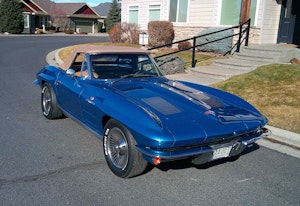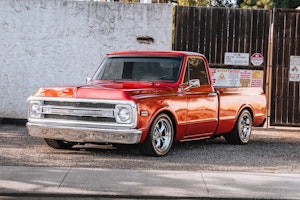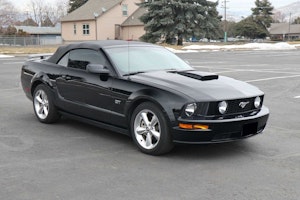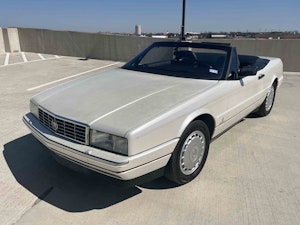Media | Articles
The Lotus Esprit Turbo is a forgotten gem
Produced from 1980–87, the Lotus Turbo Esprit is a forgotten gem in the classic exotic market. Beloved by both James Bond and (guessing here) Inspector Gadget, it offers excellent performance for modern roads, huge curb appeal, and rarity without expense.
Esprits in general are pretty scarce, and fewer than two dozen of the first-generation Turbos are insured with Hagerty as of this writing. Despite this exclusivity, values continue to stay relatively flat, with values for a #3 (Good) condition car (from the end of the range) hovering around $30,000.
That figure is approximately one-tenth of what you’d pay for a contemporary Porsche 930, which is heavier, less powerful, and not nearly as exotic. It’s less than half the price of a Ferrari 308, which would likely bankrupt you with mechanic’s bills (and outlay on moustache trimmers and Hawaiian shirts).
Consider the old adage: fast, cheap, reliable—pick any two. The majority of people opt for the latter attributes, and end up with a old Civic or Camry. The well-heeled crack open their wallets and splash out on something like a Porsche 911 Turbo. The Esprit, as with most vintage cars of British manufacture, is generally considered to have the lasting build quality of a block of Wensleydale cheese. But hey you there, with the grease under your fingernails… care to roll the dice?
Marketplace
Buy and sell classics with confidence


And then there’s the Esprit Turbo’s real hidden charm. No, it is not as robust as the German cars, nor imbued with the badge halo of the Italian marques. Instead, the Lotus is unapologetically British. That means beautiful engineering and occasionally fragile (and even shoddy) craftsmanship, but it also means that a car that can be worked on by a mechanic of average ability. A Lotus Esprit Turbo requires more than a modest cash outlay; it needs someone willing to take ownership by the reins. Here’s why that could be you.
Wedges, louvres, and snails
Among the earliest of Giorgetto Giugiaro’s “folded paper” designs, the original 1976 S1 Esprit is a classic and unfussy wedge. Turbocharging arrived in 1980 with the Essex Esprit Turbo, a limited-run machine that serves as little more than an interesting footnote in Lotus history.
Essex is the epicentre of boy-racerdom in Britain, and the turbocharged Esprit that emerged in these early days had a touch of the backwards baseball cap about it. The widened aerodynamics and rear window louvres were pure 1980s excess. Throw in a set of staggered 15-inch BBS wheels, and the original purity of the S1 Esprit’s design looked ready for a pint, a curry, and a fistfight.
And, thanks to the new 2.2-liter turbocharged four-cylinder engine, the Esprit was now capable of putting out the kind of performance its loud-mouthed appearance suggested. Further, those NACA-ducts and rear integrated spoiler are functional, funnelling cool air into the engine and increasing downforce, respectively.

The underbody of a Turbo Esprit is relatively smooth, improving aerodynamics at speed. The structure was stiffened over the earlier Esprit, with a galvanized chassis, and a stiffer steel backbone. The Esprit Turbo also has a simplified and more durable rear suspension than the naturally-aspirated S1. Weight is still light at just 2710 pounds.
The all-aluminum engine is longitudinally-mounted and canted at a 45-degree angle to fit. The Garrett T3 turbocharger pressurizes air to 8 psi before feeding a set of 45mm Dell’Orto twin-choke carburetors. Early cars used dry-sump lubrication, but from March of 1983 onward, Lotus reverted to conventional wet-sump. Redline was 7000 rpm.
Tested in 1983 by Road & Track, the 205-hp Esprit beat a contemporary Ferrari 308 Quattrovalvole to 60 mph by two-tenths of a second and proved capable of achieving its claimed top speed of 148 mph. None other than the legendary Dan Gurney declared, “The Lotus just feels like it has more beans, especially when you’re passing a line of cars.”
In 1986, the Esprit Turbo gained increased engine compression, Bosch fuel-injection, and a slight increase in maximum boost. The Turbo HCI (High Compression, Injection) brought peak power to 215 hp, with torque at 202 lb-ft. Both carbureted and fuel-injected cars have surprisingly flexible powertrains that are far less laggy than the contemporary 930.
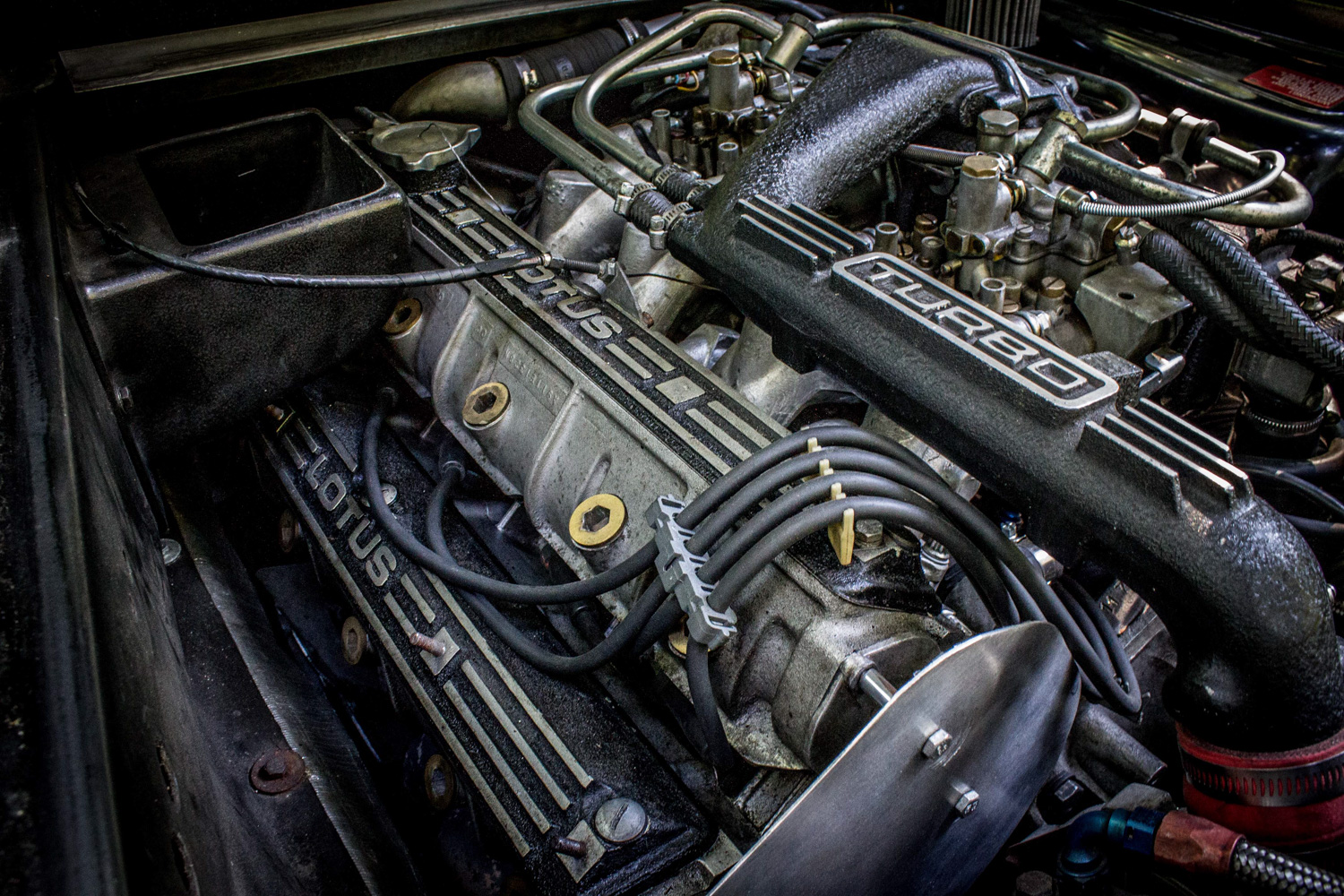

Leaving the oily parts aside, the Esprit’s creature comforts are adequate if dated. A Porsche’s cockpit is sparse and usually ages well. The Esprit’s inside is driver-focused and roomy enough for those at or under the six-foot mark. The materials, however, don’t generally stand up to the ravages of time. You do get twin cigarette lighters and ashtrays though.
Luggage space is present but minimal, and an owner is advised to pack lightly and cautiously. The rear trunk gets extremely hot under normal operation, enough—as one owner lamented—to boil your shampoo.
For your mechanic’s eyes only
The accessible price of the Esprit Turbo is both a double-edged sword and potentially a double-ended wrench in the works. The cars are inexpensive now, and a decade ago were positively cheap. That means many owners took inexcusable shortcuts, or simply didn’t bother to keep up with recommended maintenance. A large part of the Esprit’s middling reputation stems from people unwilling to lay out the required funds for a car that cost supercar prices in the mid-1980s.
Any pre-purchase inspection should therefore go looking for bodge-job repairs done on the cheap. The good news is that undoing someone’s quick-fix attempt means you’ll know things are now properly set up. The bad news is uncovering a bodge to find lasting damage done to the engine or transmission.


Richard Chong, an experienced Lotus mechanic who bought his first Esprit Turbo in 1982, insists that a well-cared for Esprit can be mechanically reliable. Beyond inspecting for the usual obvious wear, leakage, and potential crash-damage issues, he outlined a few Esprit weak points.
On the outside, the Esprit’s composite body panels can crack from the vehicle twisting—this is more a cosmetic issue than a hint at a larger problem. The front spoiler often droops around the fastening points as well. Potential bills lurk in worn pivots and drive gears for the pop-up headlights, or in drooping door pivot bushings.
On the inside, the driver’s side seat bolster tends to wear rapidly, and the Esprit’s interior can look tatty even if cared for. The headliners sag in sunny climes, and the dash material shrinks in the sun. Switchgear is a little fragile, and it’s normal for the power windows to get slow—regreasing the guides can help, although beware that they’re on a shared circuit that can fail. A common complaint is a sloppy shift action, as the Citroën-sourced gearbox was never all that crisp. New bushings will help, as will learning to finesse your gear changes.
Underneath, the standard checks for worn suspension bushings and mounts applies, with particular attention paid to the rear shocks and upper mounts. It’s also worth looking at what kind of tires the owner has mounted; it’s essentially impossible to get a set of matched tires in the factory-spec sizes, so a mismatch isn’t necessarily neglect.

A potential legion of issues lurks in the Esprit Turbo’s somewhat cramped engine bay. Chong emphasizes that the timing belts are key to Esprit longevity and that modern belts have increased replacement intervals to manageable levels. The radiator cooling tubes are narrow and subject to corrosion if the coolant PH was imbalanced. The turbocharger is relatively unstressed, but it is a potential area for leaks. The exhaust should also be examined for cracking. The water pump is a rebuild item, with no ready replacements; ditto the alternator, although this may present the potential for updating to a more modern unit with higher amperages.
Lots of trouble, usually solvable
To get an idea of what a Lotus Esprit Turbo is like to live with, I spoke to two owners: one has had his 1984 Esprit Turbo for more than two decades, and one recently acquired a 1986 Turbo HCi. Both drive their cars regularly and spiritedly, and both report that issues appeared, but could be sorted out with a little elbow grease.
“Possible, but awkward,” is how Matthew McLeod describes wrenching on his 1986 HCi. After a string of classic BMWs and a couple of turbocharged Saabs, he pulled the trigger on a black-on-gold Esprit Turbo that evokes the classic John Player’s Special livery.
An architect by trade, McLeod’s nonetheless been able to change the timing belt and perform other more basic maintenance. He points out the drawback of the tight confines of the engine bay, with the timing belt wedged right up against the rear bulkhead. However, the Esprit’s engine is just a four-cylinder and doesn’t require the engine-out servicing that a Ferrari would.

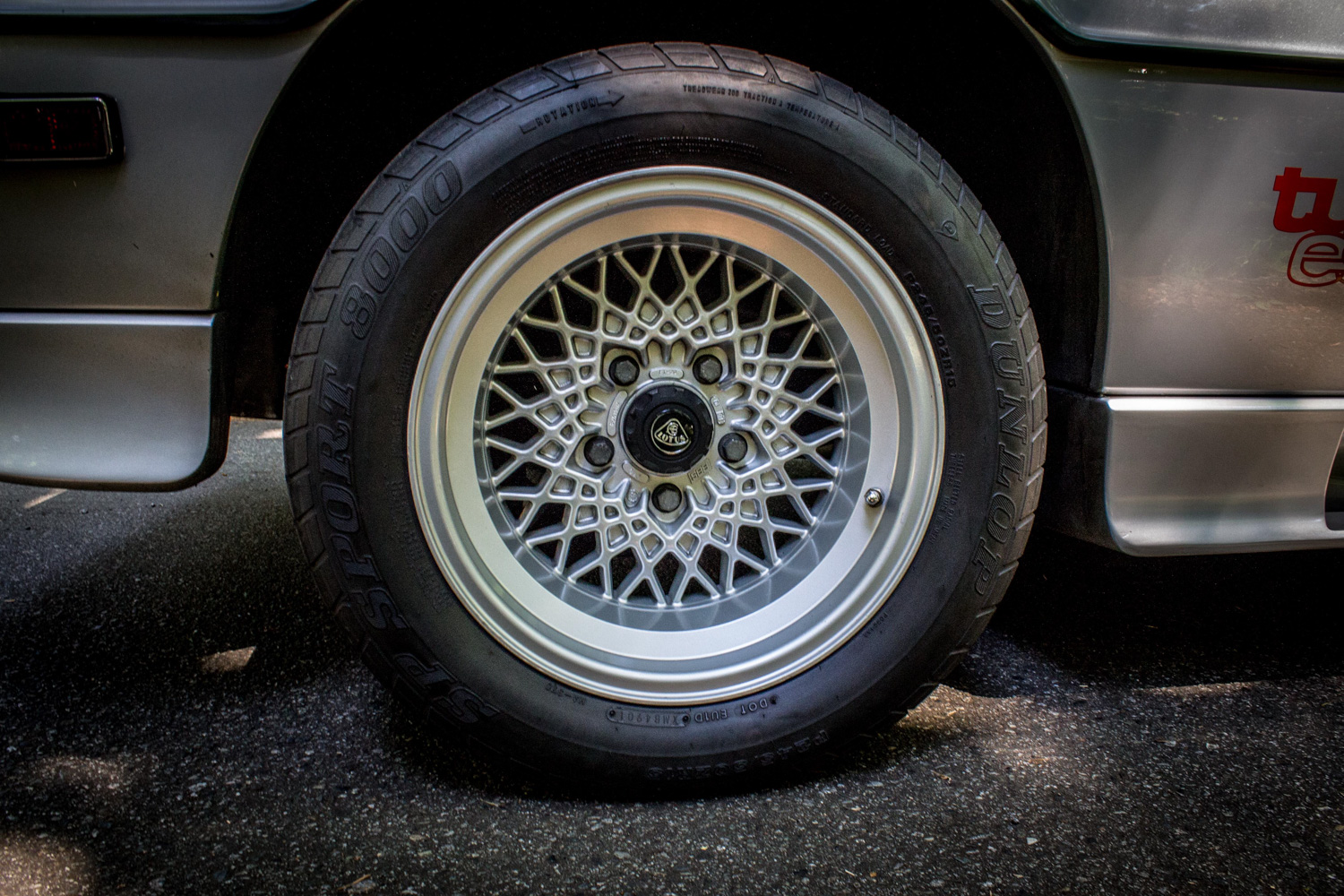
The owner of the ’84 Esprit Turbo owns a Ferrari 360 coupe as well, and he reports that one great joy of Lotus ownership is figuring out which supplier actually made the parts. Instead of paying thousands for a new Lotus-branded starter, the unit was removed, identified as a Ford part of some description, and rebuilt with modern internals for a couple of hundred dollars.
Can you send your Esprit Turbo down to the Lotus specialist to be rebuilt? Possibly, although expect exotic-car bills. Better instead to spend time tracking down a servicing manual and attempting most of the work yourself.
A great resource for aftermarket original-equipment parts for your Esprit is JAE Parts in Santa Barbara. A long-time Lotus specialist, the company is small enough to be able to offer a little personal advice before you attempt a project.
Then there’s the tires, the one issue as yet to be solved by the aftermarket. As mentioned, finding a matched set of tires for the 15-inch BBS wheels is impossible, let alone trying to get the original Goodyears. Most owners choose to mix and match as close as possible, with Tirerack now offering correct sizing in pairs.
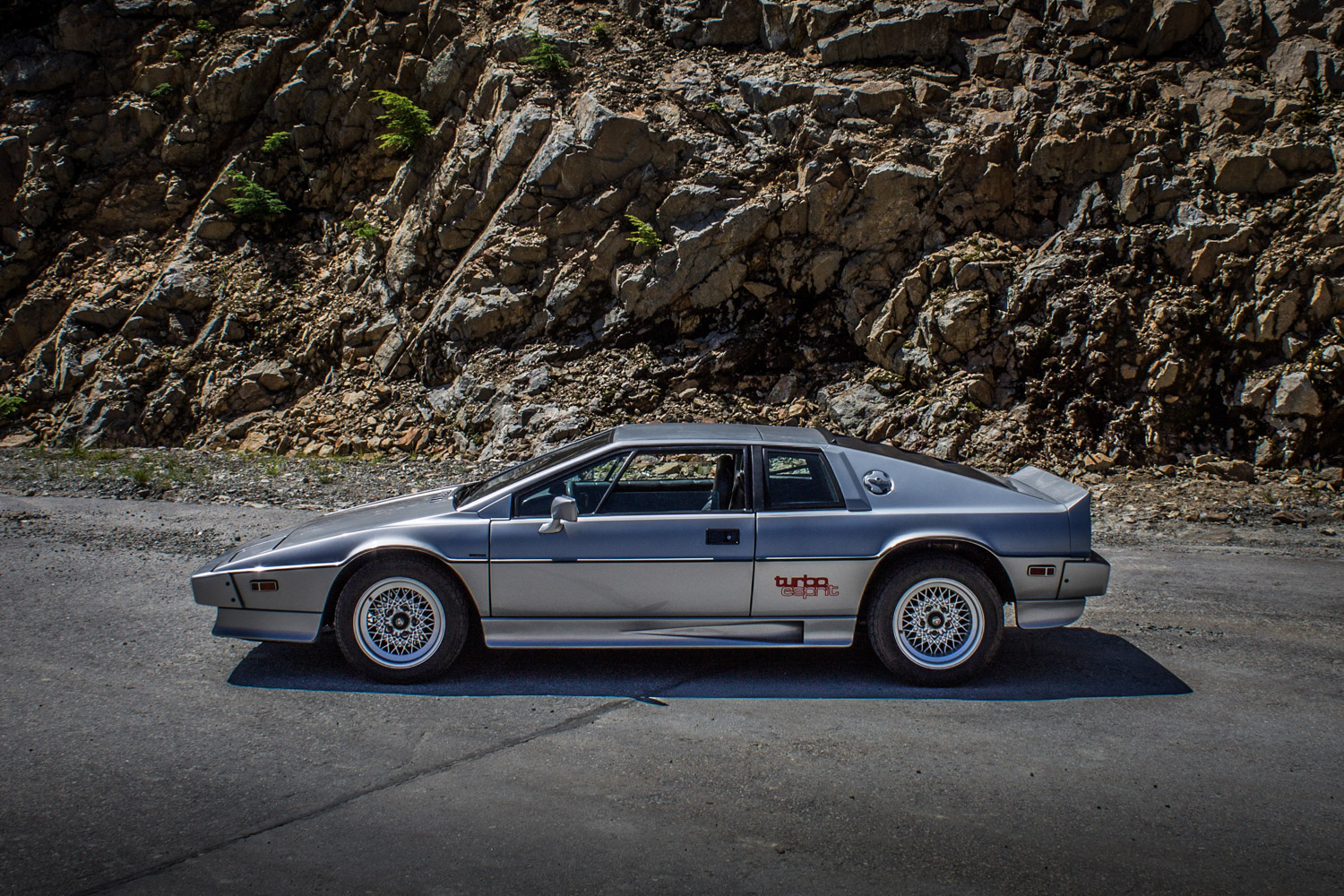
Esprit de tour
The Giugaro-designed Esprit Turbo was phased out after the 1987 model year, replaced with a car restyled by Peter Stevens. This time the Esprit Turbo was referred to by its internal code of X180, rather than being given a series name (S1, S2, etc). These interim cars sit between the wedge-shaped original and the swan song twin-turbo Esprit V8 and, while notably different, are worth a look for their similar four-cylinder turbocharged mechanicals.
For the original Esprit Turbo, late-model wedges represent the best value proposition. Like most cars, Esprits benefit from regular use, rather than being stored long-term while the seals all dry out. They’re an inexpensive exotic, which means they shouldn’t be molly-coddled.
McLeod’s 1986 Esprit Turbo HCi is so-used, and has just returned from an 800-mile weekend, one of a handful of personal Mille Miglias it will run over the course of the year. A little going-over before setting out, and it performed flawlessly.

While the rear visibility isn’t great, an Esprit is no more difficult to drive through modern traffic than an Acura NSX is. It’s comfortable over distances, and fast enough to be current. Our long-term owner with the 1984 example recently moved the car out to a more rural location so as to be able to exercise the car’s long legs rather than being stuck in the low gears around town.
In short, the beauty of the Esprit Turbo is that it offers something precious without being costly. Its price is within reach of the average enthusiast. Its mechanical simplicity rewards the hobbyist mechanic who blends optimism and a bit of research. And, with a bit of due diligence, one can be a faithful road companion.
Fast, cheap, reliable. You can’t have everything, but for those who are willing to put the effort in, you can have something pretty special.

